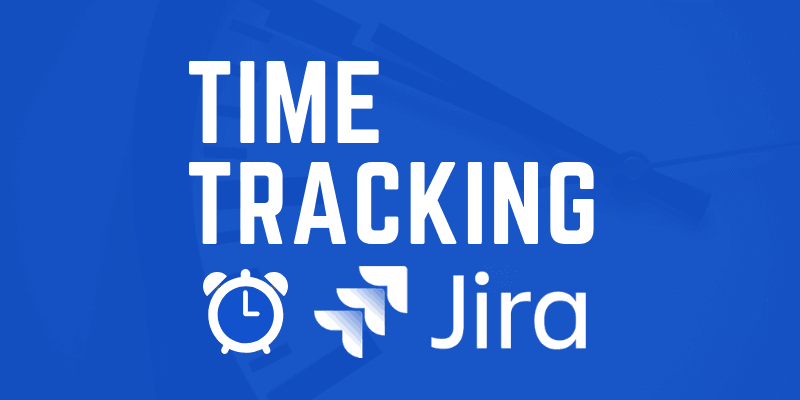Efficiently Track Progress with Jira Log Work | Streamline Workflows

- We Work on and progress your issues
- Log time on an issue
- Estimate an issue
- Pin a field to the top of an issue
- Markdown and keyboard shortcuts
- Flag an issue
- Rank an issue
- Streamline Jira Workflows With These Best Practices
- Review the number of stories or tasks in the In Progress status category
- A Jira workflow is a set of statuses and transitions that an issue moves through during its lifecycle
- Getting started as a Jira Software manager
In today's fast-paced work environment, effective project management is key to ensuring productivity and success.
One powerful tool that can aid in this process is Jira Software.
With its comprehensive features and functionalities, Jira Software allows teams to efficiently track progress and streamline workflows.
One of the key features of Jira Software is the ability to log work, which enables team members to accurately track the time spent on each issue. This not only helps in monitoring progress but also allows for better resource allocation and project planning.
In this article, we will explore how to use Jira Log Work effectively to maximize productivity and ensure smooth workflow management.
So, let's dive in and discover the benefits of using Jira Log Work to efficiently track progress and streamline workflows.
We Work on and progress your issues
Within Jira Log Work, actively managing and monitoring progress on assigned issues is a crucial step to efficiently tracking progress and optimizing workflows. By leveraging the various tools and features available, teams can easily assign work to specific team members, update the status of a task, and collaborate with others.
This allows them to take ownership of their tasks and track their progress in real time so that any potential roadblocks or bottlenecks can be quickly identified and addressed.
Jira also provides a handy way to log time spent on an issue. This feature allows users to accurately record the amount of effort put into a task, so teams can gain insight into their resource allocation and project progress.
Logging time with Jira also simplifies workflows, as it provides a detailed record of the time invested in each issue, helping teams to identify potential areas for improvement.
In short, Jira offers a comprehensive platform for tracking and managing web work and progress.
With its intuitive interface and useful features, teams can easily assign tasks, monitor progress, and log time, giving them the information they need to keep their projects on track and optimize their processes.
Log time on an issue
Efficient project management in Jira necessitates precise time logging on each issue. The Log Work feature allows you to effortlessly monitor the effort invested while providing valuable insights into your team's progress.
This feature enables the accurate capture of the time dedicated to each task, guaranteeing a clear understanding of the labor involved.
With precise time tracking, you can streamline workflows, spot bottlenecks, and heighten productivity.
Take full advantage of the Log Work feature to enhance your project management process.
When it comes to monitoring time, Jira's Log Work offers flexibility and ease. You can log time on an issue using various approaches, such as logging time expended on a certain day or logging time from the commencement to the conclusion of a task.
Additionally, you can add comments to provide additional context and information concerning the work completed. By accurately tracking time on an issue, you can generate comprehensive reports, revealing the real effort contributed to each task.
These reports can be immensely valuable for evaluating team performance, recognizing areas for improvement, and making informed decisions. Leverage the Log Work feature to guarantee accurate time tracking and improve your overall project management process.
Estimate an issue
Accurately estimating an issue is critical for successful project management within Jira. To achieve this, teams must select an approach that best fits their needs, be it story points or time-based estimates.
Doing so allows teams to forecast delivery timelines, optimize resource allocation, and prioritize tasks - all of which contribute to ensuring projects stay on track.
Estimating an issue in Jira also offers a range of benefits, such as helping teams track progress and measure productivity. By assigning estimates to tasks, teams can easily monitor the amount of work completed and compare it to the allocated effort, allowing them to identify any potential bottlenecks.
Furthermore, this helps with effective resource allocation, as teams can make necessary adjustments to ensure timely delivery.
Estimating an issue is also essential for effective collaboration and communication within a team. By having clear estimates assigned to tasks, team members can have a shared understanding of the effort required and plan their work accordingly.
This helps to organize workloads and prevents any confusion or duplication of effort. Moreover, by estimating an issue, teams are empowered to prioritize tasks and focus on the most critical issues, streamlining workflows and enhancing project management within Jira.
Pin a field to the top of an issue
Prioritizing critical details and keeping them readily visible is possible by pinning a field to the top of an issue. This allows you to quickly check the most important aspects of a task, such as the assignee or due date, without scrolling through sections.
This feature streamlines your workflow and optimizes productivity by providing a comprehensive overview of the essential elements. Not only that, but it provides customizability, allowing you to set up your board according to your needs and preferences.
Pinning a field to the top of an issue also enhances collaboration and communication within a team. All team members can have quick access to the pertinent information, so they can share updates, assign tasks, and coordinate efforts more easily.
This transparency ensures mutual understanding, reduces misunderstandings, and encourages prompt decisions. Whether you are a project manager or a team member, this feature contributes to a more efficient workflow and increased productivity.
Having a tailored and organized board is invaluable when tackling multiple projects or complex tasks.
By pinning the most relevant fields to the top of your issues, you save time from having to search for important details. Moreover, you can maintain focus and stay organized, making informed decisions and taking prompt action.
This feature simplifies work and boosts productivity, making it an indispensable tool for effective task management and progress tracking.
Markdown and keyboard shortcuts
Utilizing Markdown and keyboard shortcuts can be essential for effective project management in Jira. These tools provide the ability to format text quickly and easily, making communication and highlighting of important information simpler.
With only a few symbols, you can bold, italicize, and create headers and bullet points, which can give your issue descriptions and comments an organized and aesthetically pleasing look. In addition, keyboard shortcuts can help you move and edit quickly, conserving a great deal of time while working on various tasks or issues.
Integrating these features into your workflow can maximize efficiency and streamline your project management process.
Markdown and keyboard shortcuts can also be used to emphasize a specific issue. By adding a symbol or keyword, such as an exclamation point or the word flag, an alert can be triggered, calling attention to an issue that needs to be addressed immediately.
This can help you prioritize your tasks and ensure that nothing of importance is overlooked. With the use of Markdown and keyboard shortcuts, you can have more control over your project's progress and manage your workload more effectively.
Another benefit of Markdown and keyboard shortcuts is the ability to rank issues. Assigning a certain symbol or keyword to an issue will enable you to prioritize and organize tasks. Whether you use numbers, letters, or other characters, this can help you determine the order in which issues should be addressed, so that the most important ones are completed first.
By taking advantage of Markdown and keyboard shortcuts, you can create a more organized and systematic approach to tackling your workload.
To conclude, Markdown and keyboard shortcuts are invaluable tools for enhancing your project management experience in Jira. With the help of Markdown's formatting capabilities, you can communicate information with clarity and brevity, making it easier for team members to comprehend and act.
Keyboard shortcuts make navigating and editing much faster, saving time and energy when dealing with multiple tasks or issues. Incorporating these features into your workflow can optimize your project management process and help you keep track of progress, ultimately leading to improved productivity and successful project completion.
Flag an issue
Identifying and prioritizing tasks in your project is made easy by flagging an issue in Jira Software Cloud. By simply clicking the flag icon next to the issue, you can instantly highlight tasks that require urgent attention or are related to high-priority customer requests.
This visual cue helps team members understand the urgency and importance of the task, allowing them to efficiently allocate their resources and time accordingly.
Jira's intuitive interface and powerful flagging feature can help streamline workflows and ensure that no critical issue is overlooked.
Flagging an issue is an essential tool for managing your project's workflow effectively. Not only does it help you identify and prioritize tasks, but it also serves as a form of communication between team members.
The flag icon allows you to communicate important information, such as the urgency of an issue, without having to use words. With the flagging feature of Jira Software Cloud, you can make sure that all team members are on the same page when it comes to addressing and resolving flagged issues.
Rank an issue
Organizing issues according to their importance is a key factor in successful project management. Jira provides a convenient and user-friendly way to accomplish this with its Rank field. This allows teams to easily establish a sequence of priority, from the most pressing bugs to deferred feature requests.
Through the simple act of dragging and dropping the issues into the desired order, you can ensure that your team is aware of which tasks to address first.
Not only does this facilitate efficient workflow, but it also gives you the flexibility to rearrange the list as new tasks arise or priorities change.
So, don't underestimate the importance of ranking issues in Jira – it's a small step that can go a long way towards ensuring your project's success.
Streamline Jira Workflows With These Best Practices
Optimizing Jira workflows with best practices is essential for successful project management. Utilizing these strategies, teams can increase productivity and ensure that tasks are completed promptly.
Logging work with Jira Log Work is an indispensable practice, as it allows team members to log the amount of time spent on an issue, providing valuable insights into how much effort is required for different activities. Accurately tracking time makes it easier to assign resources and spot areas for improvement.
Another key practice for streamlining Jira workflows is analyzing the number of stories or tasks in the In Progress status category. This helps identify bottlenecks and areas where work is lagging behind, so teams can take necessary steps to keep the project moving.
Regular monitoring of the progress of tasks in this category promotes transparency and accountability within the team, leading to improved efficiency and on-time delivery of projects.
Additionally, it is vital to understand that a Jira workflow consists of statuses and transitions an issue goes through during its lifecycle. Configuring and optimizing workflows with best practices ensures that tasks are well-managed and progress effortlessly from one stage to the next.
This includes defining distinct statuses, mapping out transitions, and formulating guidelines for when and how issues should move through the workflow. An optimally designed workflow boosts collaboration, reduces confusion, and encourages effective teamwork throughout the project.
Review the number of stories or tasks in the In Progress status category
Gaining insights into your team's workflow is essential for effective Jira management. To do so, regularly evaluating the number of tasks in the In Progress status is key.
By understanding the workload and distribution of these tasks, you can identify any bottlenecks or areas requiring attention.
Likewise, using Jira's reporting capabilities to analyze data in this category can provide valuable insights and help you make informed decisions about resource allocation and prioritize tasks accordingly.
To streamline the review process, it is important to establish clear criteria for transitioning tasks from the In Progress stage to the next. This criteria can include completion percentage, dependencies, or specific milestones.
By setting these parameters, you can ensure that tasks are progressing as anticipated.
By regularly reviewing the number of stories or tasks in this category, you can detect any deviations from the criteria and take the necessary steps to keep the workflow on track.
Ultimately, how to effectively manage your Jira workflow can be simplified by regularly assessing the number of stories or tasks in the In Progress status. Utilizing Jira's reporting capabilities and establishing clear criteria can help you identify any issues and optimize your team's progress.
A Jira workflow is a set of statuses and transitions that an issue moves through during its lifecycle
A Jira workflow provides a comprehensive roadmap for issue tracking and task management. It outlines the different stages an issue goes through during its lifecycle, from creation to resolution. This ensures that all parties involved are kept in the loop.
By mapping out statuses and transitions, teams can easily prioritize tasks and keep work on track. With a well-designed Jira workflow, teams can gain valuable insights into the progress of their tasks.
Jira workflows are highly customizable, allowing teams to tailor them to their specific needs. Different types of tasks may have different statuses and transitions, helping teams to effectively categorize tasks and track progress.
This flexibility allows teams to ensure that their workflows are optimally organized and that projects are completed on time.
A well-designed Jira workflow can bring numerous benefits to teams. By tracking the statuses and transitions of tasks, teams can identify areas for improvement and make adjustments to streamline their processes.
Additionally, teams can quickly gain an understanding of the current state of their tasks, enabling them to prioritize work and keep tasks from slipping through the cracks.
With a Jira workflow, teams can effectively manage their tasks and ensure successful outcomes.
Getting started as a Jira Software manager
Stepping into the role of a Jira Software manager can be daunting, but with the right tools and strategies, you can keep tabs on progress and streamline operations. One such feature is the Log Work function, which allows you to log the amount of time devoted to each task.
This serves as a useful tool for monitoring progress, recognizing bottlenecks, and gaining insights into the team's efficiency, which will help you make smart decisions on resource distribution and project timelines.
It is paramount for a Jira Software manager to have a firm understanding of how to estimate a job. There are several techniques for estimating tasks, such as story points and time-based assessments, which allow you to select the method that best fits the team's workflow.
Accurate estimation will help set realistic expectations and ensure a smooth and successful management process.
Pin a field to the top of an issue is a great feature that can substantially refine your managerial experience. This comes in handy for prioritizing essential info or custom fields that need urgent attention.
Whether it's a deadline, severity level, or any other relevant data, pinning it to the top of the issue guarantees visibility and easy access. This feature helps you stay organized and focused on the most vital aspects of your project.
Markdown and keyboard shortcuts are two must-haves for a Jira Software manager. Markdown allows you to format and arrange your issue descriptions, comments, and other text fields in an attractive and intelligible way.
It simplifies the process of adding headings, lists, links, and other formatting elements. Additionally, keyboard shortcuts let you navigate and perform actions within Jira swiftly.
By getting familiar with these shortcuts, you can save time and improve your productivity as a Jira Software manager.
Leave a Reply




Related Posts